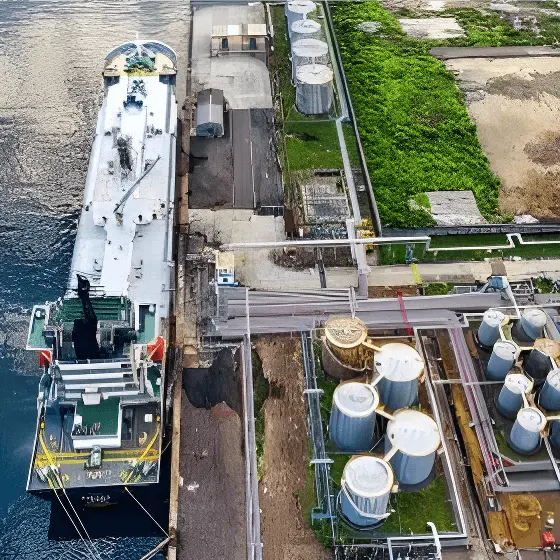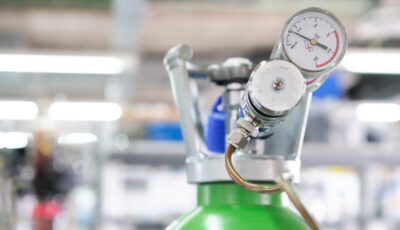Biofuel Purification Sieves Explained: Technology and Methods
Molecular sieves play a crucial role in the purification of biofuels by selectively adsorbing water and other impurities from the fuel, helping to enhance its quality and performance. Through their unique pore structure, molecular sieves are able to remove unwanted contaminants, making them an essential component in the production of high-quality biofuels.

Understanding Biofuels
Biofuels are like superheroes of the energy world. They’re crafted from organic materials such as plant-based oils, animal fats, or recycled cooking grease. What makes them super is that they’re renewable, unlike fossil fuels.
You might wonder: why does being renewable matter? Well, because biofuels come from plants and waste, they can be swiftly replaced. Unlike fossil fuels, which take millions of years to form, once they’re consumed, they’re gone. Utilizing renewable sources helps to minimize our impact on the environment while lessening our dependence on non-renewable resources.
But there’s more to this story. The excitement around biofuels stems from their positive environmental impact. When used as fuel, they produce fewer greenhouse gas emissions than traditional fossil fuels, leading to reduced harm to the environment and a smaller contribution to climate change—an outcome we can all support.
Imagine ethanol, for example. It’s a type of biofuel often made from corn or sugarcane. When blended with gasoline for cars, it results in cleaner emissions and reduces air pollution—a remarkable feat indeed.
Our reliance on non-renewable resources has long been a concern, prompting us to explore sustainable alternatives. Biofuels not only offer a solution to this issue but also present opportunities for cleaner, greener energy that doesn’t compromise performance.
Now that we’ve gained a solid understanding of what biofuels are and why they hold such significance, it’s time to take a deeper dive into how they’re produced and comprehend the importance of purification in this process.
Sieve Methods in Biofuel Purification
When it comes to purifying biofuels, molecular sieve technology and activated alumina play pivotal roles. First, let’s delve into the intricacies of Molecular Sieve Technology.
Molecular Sieve Technology
Molecular sieves are crucial for dehydrating biofuels by selectively adsorbing water molecules from the fuel, thereby improving its purity and stability. This is essential in preventing corrosion in engines and enhancing the overall quality of biofuels. But how does this work exactly?
Molecular sieves can be likened to microscopic sponges with tiny pores that capture water molecules while leaving the larger fuel molecules untouched. It’s similar to separating grains of rice from sand—the sieve only allows through what is desired.
This is particularly important because even a small amount of water in your fuel can cause rust and other issues in your engine over time, leading to costly repairs and reduced engine efficiency.
Activated Alumina in Biofuel Purification
Activated alumina is specifically used for removing impurities and contaminants from biofuel streams. Its high surface area and porous nature make it an effective adsorbent for purifying biofuels. This is crucial because any impurities or contaminants in the fuel can impact its combustion and potentially damage the engine.
Activated alumina acts like a magnet for impurities—it attracts and firmly holds onto them so they won’t cause any trouble when the fuel is burned in an engine. It ensures that the fuel remains pure and clean, much like using a filter to ensure the water you drink is safe.
Whether it’s removing water with molecular sieves or impurities with activated alumina, these methods are vital to ensuring the quality and performance of biofuels.
Role of Sieving in Biofuel Efficiency
When it comes to transforming organic matter into a viable energy source, maintaining its quality is key. Efficient sieving techniques play a significant role in ensuring the quality and performance of biofuels. Let’s dissect this further:
Enhanced Energy Output
One of the critical advantages of effective sieving methods is their ability to remove water and impurities from biofuels. When biofuels are clean, free from contaminants, and have minimal water content, they can burn more efficiently, ultimately leading to increased energy output. This efficiency directly translates to a better fuel economy, making biofuels more competitive with traditional fossil fuels.
Reduced Maintenance Costs
Additionally, by employing high-quality purification sieves, the need for maintenance in engines that use biofuels is greatly reduced. Impurities present in the fuel can contribute to engine wear and tear over time, leading to higher maintenance costs. With meticulous sieving processes, these impurities are effectively removed, thereby minimizing the likelihood of mechanical issues and reducing overall maintenance expenses.
It’s like taking care of your car – regular oil changes keep your engine running smoothly for longer.
Lower Emissions
Furthermore, the impact of efficient sieving on emissions is substantial. When biofuels are purified to a high standard, they produce fewer harmful emissions than their unrefined counterparts. As a sustainable and environmentally conscious energy source, biofuels that undergo thorough sieving processes contribute to decreasing overall emissions, making them a cleaner alternative to conventional fuels.
Positioning Biofuels as a Reliable Energy Source
The role of sieving in biofuel efficiency cannot be overstated. By ensuring that biofuels are devoid of impurities and moisture, purification sieves play a crucial part in enhancing energy output, reducing maintenance costs in engines, and lowering emissions. This positions biofuels as a sustainable and reliable choice for meeting energy demands while also contributing to environmental conservation efforts.
Selecting an Ideal Biofuel Purification Sieve
When it comes to choosing a purification sieve for biofuels, specific factors demand careful consideration. The nature of biofuel production processes varies, as do the requirements for purification. We need to be mindful of the adsorption capacity, pore size, and chemical compatibility with biofuels, critical in the effectiveness of the purification process.
What makes HengYe Inc. a standout choice is its tailored range of molecular sieves and activated alumina products designed specifically for efficient biofuel purification. Our products are engineered to deliver high performance and quality, addressing the unique demands of biofuel production.
An essential factor to keep in mind is the adsorption capacity of the purification sieve. This refers to the amount of contaminants or impurities that a sieve can capture while retaining its structural integrity and performance. Different biofuels present varying levels of impurities, requiring different adsorption capacities. In this regard, HengYe Inc. understands the diverse needs of biofuel producers and offers molecular sieves with versatile adsorption capabilities.
Additionally, pore size is a key consideration in selecting an ideal biofuel purification sieve. Pore size determines which molecules can be effectively adsorbed by the sieve. When it comes to biofuels, pore size plays a crucial role in capturing impurities without compromising the integrity of the fuel itself. HengYe Inc.’s range of molecular sieves includes options with tailored pore sizes to suit different biofuel production requirements.
Lastly, chemical compatibility between the purification sieve and biofuels cannot be overlooked. It’s essential to ensure that the materials used in the construction of the sieve are compatible with the specific chemical composition of the biofuels being processed. HengYe Inc.’s molecular sieves are engineered with a deep understanding of chemical compatibility, providing assurance that they will seamlessly integrate with various types of biofuels without any adverse reactions.
In summary, selecting an ideal biofuel purification sieve involves a comprehensive analysis of adsorption capacity, pore size, and chemical compatibility with biofuels. HengYe Inc.’s expertise in this domain ensures that our molecular sieves and activated alumina products are tailored to meet the intricate needs of efficient biofuel purification, delivering consistently high performance and exceptional quality.
Digging Deeper: Liquid and Solid Separation
The process of separating liquids from solids is critical in biofuel production. It ensures that the resulting biofuels are of high quality and purity. This step is fundamental for enhancing fuel stability, reducing corrosion, and ultimately improving engine performance. Purification sieves play a crucial role in achieving these goals throughout the entire process.
One of the primary tasks of purification sieves in biofuel production is to assist in the removal of water and contaminants from the biofuels, thereby ensuring that the end product meets the necessary quality standards. The removal of water is particularly significant as it can cause issues such as microbial growth and fuel degradation if left unaddressed.
Furthermore, purification sieves help to prevent the formation of sediments by efficiently separating solid particles from the liquid biofuels. This is essential for maintaining the integrity and purity of the biofuels throughout their lifecycle – from production to distribution and eventual usage.
From an operational perspective, the use of purification sieves for liquid and solid separation offers practical benefits to biofuel producers. It allows for effective control over product quality, ensuring that only biofuels meeting specified standards are released into the market. This level of control not only maintains customer satisfaction but also contributes to reducing potential issues related to poor fuel quality.
In essence, purification sieves form an integral part of the entire biofuel production process by enabling optimal liquid and solid separation. Their role in removing water, contaminants, and solid particles serves as a safeguard against fuel degradation, deterioration, and engine performance issues. With the right purification sieves in place, biofuel producers can ensure that their products meet quality standards while optimizing operational efficiency.
Benefits of Using Biofuel Purification Sieves
When it comes to biofuels, purification sieves play a pivotal role in enhancing both the quality and sustainability of the fuel. Let’s explore some key benefits ascribed to the use of biofuel purification sieves.
Enhanced Fuel Quality: Purification sieves facilitate the removal of impurities and water from biofuels, resulting in cleaner and higher-quality biofuel that is free from contaminants, thus optimizing engine performance.
Engine Protection: By purifying biofuels, sieves mitigate the risk of engine corrosion and wear, preventing the accumulation of harmful particles that can compromise the engine’s integrity, ultimately extending its lifespan and maintaining optimal functionality.
Environmental Impact: The utilization of purification sieves contributes to lower emissions and decreased environmental impact by ensuring that biofuels are of high quality and free from contaminants. These sieves support efforts to reduce carbon footprints and environmental harm.
Sustainable Energy: Purification sieves are a critical component in supporting sustainable energy solutions by ensuring the purity and cleanliness of biofuels, thus promoting the use of sustainable and renewable energy sources.
In summary, the use of biofuel purification sieves goes beyond merely filtering impurities. It elevates biofuel quality, protects engines from damage, reduces environmental impact, and bolsters the adoption of sustainable energy. These benefits underscore the indispensable role that purification sieves play in advancing the viability and efficacy of biofuels in our modern energy landscape.
It’s evident that implementing these purification measures is not only beneficial for individual consumers but also contributes to wider environmental and sustainability goals. The collective advantages indicate the significant impact of incorporating purification sieves into biofuel processing, paving the way for more efficient and eco-conscious energy utilization.
Biofuel Purification Sieves: Cutting-edge Techniques and Future Trends
In the rapidly evolving bioenergy landscape, there’s a constant push for innovation to maximize the efficiency of biofuel purification processes. This has led to the development of groundbreaking techniques that optimize the performance of biofuel purification sieves to meet the increasing demands of the industry.
One of the key advancements in biofuel purification sieves is the integration of tailored pore structures. These engineered structures are meticulously designed to precisely match the molecular dimensions of impurities in biofuels, thereby enabling more selective adsorption and separation. By customizing the pore characteristics, the adsorption capacity and efficiency of the sieves are greatly enhanced, resulting in improved purity and quality of the biofuels.
Furthermore, advancements in adsorption kinetics have played a pivotal role in revolutionizing biofuel purification. The introduction of enhanced adsorption kinetics in modern purification sieves has significantly accelerated the rate at which impurities are captured and removed from biofuels. This rapid adsorption process not only expedites the purification cycle but also contributes to substantial energy savings and process optimization.
These developments underscore a commitment to sustainable and efficient solutions in the bioenergy sector. HengYe Inc., as a leader in adsorbent technology, has continuously spearheaded these advancements. Through extensive research and collaboration, our state-of-the-art biofuel purification sieves consistently align with prevailing industry trends, ensuring that our clients benefit from cutting-edge technology that promotes environmental sustainability and process efficiency.
With continuous improvements in driving industry standards, it’s evident that biofuel purification sieves are poised to remain at the forefront of sustainable energy production.
As technology continues to advance rapidly and shape the future of bioenergy, staying informed about these innovations can provide significant benefits for industries seeking higher efficiency and sustainability. To explore our range of biofuel purification sieves, visit HengYe Inc.’s contact page today or call us at 844-308-3271 for expert guidance.


